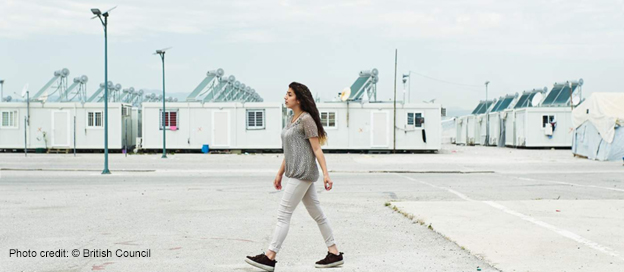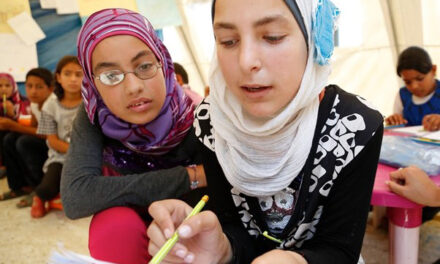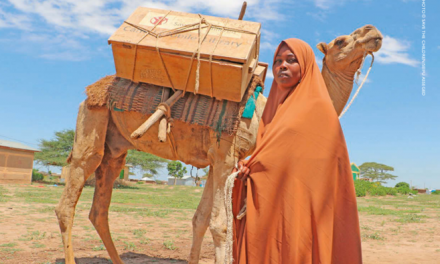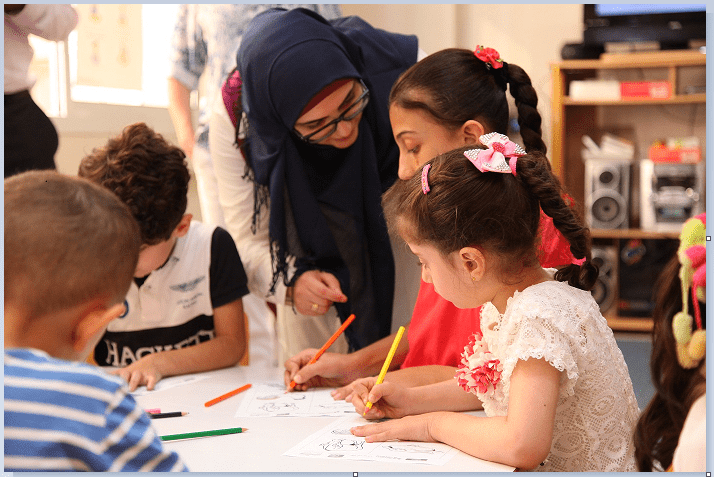This blog was written by Anja Nielsen, Trustee of the Council for Education in the Commonwealth; John Zimba, University of East Anglia; Joseph Field, British Council; Josh Corlett, International Rescue Committee; Koula Charitonos, The Open University; Mercy Martins, University of Bath; Mir Abdullah Miri, University of Bath. It primarily draws on the UKFIET-British Council event on “Language and Its Critical Role in Education and Training Around the World.” The authors have all made equal contributions, and their names are simply listed in alphabetical order.
In March 2024, UKFIET and the British Council collaborated to host a workshop in London to discuss the essential role of language in global education and training. This event brought together a diverse group of academics, practitioners, and advocates for a day-long exploration. The discussions throughout the day highlighted how language shapes and influences educational practices and policies worldwide.
The authors of this blog were members of the “Language in Education in Crisis Contexts” group. We discussed why language plays such a crucial but overlooked role in education during emergencies and protracted crises. In situations of crises, education may not be in the top priorities for either the initial emergency response or subsequent, ongoing support. According to UNICEF, less than 3% of humanitarian aid is given to education despite education being seen as a lifeline for children and having long term benefits to societies and the future stability of countries. Where education is considered within a crisis response, language is a component that can be overlooked, thus creating issues of access, inclusion, identity and safety for those children affected.
Here, we expand on three key benefits identified during the workshop and discuss solutions on how to elevate and instil the importance of considering language in education in crisis contexts.
1. Language enables education continuity and supports quality learning.
At the heart of educational provision in crisis contexts is language. Language of instruction is a critical component for effective learning in educational settings and must not be overlooked for crisis-affected children, for whom being in school can be integral to peacebuilding and often a sign of peace itself returning after conflict. Children struggle more academically and socio-emotionally when they do not learn in their own language, which can make them feel more isolated and vulnerable; and further exacerbate inequalities and discrimination. Starting and/or providing education in a child’s mother tongue enhances comprehension, connections, and comfort – ideally for the first six years of instruction for full competence. Bearing in mind the often inflexible language policies of governments, we recognise the need for a staggered approach in the transition to the official language of instruction, facilitating as far as possible a smooth integration for crisis-affected children into the mainstream education system. In the worst circumstances, lack of access to mother tongue learning or suitable language bridging programmes can force crisis-affected children out of school altogether. Drawing on bilingual and multilingual pedagogies supports transition too.
Beyond access, language affects the thought processing of learners, allowing them to more easily engage in critical thinking and internalisation of knowledge. We are quickly reminded of Paulo Freire’s critical pedagogy in teaching and learning that can democratise learning, but how can this be effectively executed if the language of instruction becomes the first barrier learners in some crisis contexts must encounter? Hence, considering the role language plays in children being able to access and be retained in educational opportunities is critical from the outset.
Education loses its essence if children struggle to learn due to language barriers.
2. Language supports inclusion while helping to preserve identity and navigate power dynamics.
Crisis-affected children, and their families and communities, are often displaced within their country of origin or become refugees in a host country; such as Sudanese children who have fled to Chad in the recent Sudanese crisis. This disrupts education continuity not only in terms of access and curriculum areas but also in the language of instruction being employed in the host countries. Considering a structured approach to how refugee or displaced children can access education opportunities when the language of instruction is different to theirs can act as a catalyst, giving learners the confidence and a head start that leads to immense capabilities. Education in a familiar language can help children stay on the path they began, supporting the continuation of quality learning.
Beyond learning, including language in educational planning during crises has significant social benefits. Inequality and discrimination against children are often exacerbated in crisis contexts, making it imperative to continually remind policymakers of the intrinsic link between language and identity. It is crucial to emphasise the role of language in fostering social cohesion within host communities. This inclusion helps displaced children maintain strong connections to their cultural identity, which is vital if they return to their countries. This approach can not only support feelings of belonging in the new country but also strengthen community ties, reducing conflicts that arise from cultural and linguistic disparities. Broadly, in any situation where you cannot speak or understand the given language, there are issues of power, but arguably these are exacerbated in a humanitarian context.
When communities are displaced, mixing different languages and cultures can create conflicts about identity and power in schools. For children moving to new countries or states, the language of instruction might not be one that they are familiar with, or have never formally learnt in, and the language of the school environment could feel exclusionary if they cannot communicate.
For those who are displaced for longer time periods, the language of their home country might be a way to hold on to their feelings of identity and culture. This may be particularly acute for those who will be unable to return to their community, such as those permanently affected by climate displacement. For some children, tensions may be created with their families if they do not learn how to speak their mother tongue.
Our enriching discussions underscored the vital role of language alongside other crucial commitments to fostering an inclusive culture which promotes equality, values diversity and maintains an environment in which the rights and dignity of displaced people are respected. This commitment is expressed in the UK through Equality, Diversity, and Inclusion (EDI) developments, which aim to ensure fair treatment and opportunities for all, recognising and valuing the differences people bring to the educational environment. Refugees and displaced individuals should not be compelled to relinquish facets of their identity to conform to established norms, including their languages. However, gaining fluency in new languages of power may support displaced individuals in developing agency and having their voices heard, allowing them to engage with institutions and communicate beyond the boundaries of their immediate context. This linguistic empowerment is essential for meaningful inclusion and participation in their new environments.
We do well to remember that language serves as a profound marker of identity and culture.
3. Language is an important part of school and community safety in emergencies.
While the provision of education in crisis and conflict situations is at times an afterthought for governments, schools in this context can offer normality, safety, and routine often absent in the wider environment. It is essential to reintegrate the protection element that that a school can offer to support child safety and wellbeing. This includes using previously shared resources that illustrate how language acts as a protective factor, ensuring that children can communicate their needs and access critical resources without barriers. The importance of language in education in emergencies thus has implications both within and beyond school walls.
Within schools, language is vital to ensure that children and their caregivers can communicate effectively without linguistic barriers. If children cannot be understood in their mother tongue, they may be more at risk of child protection and safeguarding harms, as they are unable to effectively share their needs. Lacking access to schools due to language barriers may also cause issues in accessing the lifesaving resources often delivered by schools in emergencies, such as school meals and health assessments.
Beyond the school, language is essential to consider in education for Disaster Risk Reduction (DRR). For instance, as the climate crisis deepens, education can support children’s and communities’ resilience, imparting them with the lifesaving knowledge and skills they need to understand and adapt to the coming emergency. Language must be a central consideration in these programmes to ensure all members of the community benefit from this information.
Supporting language in education in emergencies
Our discussions confirmed that incorporating language considerations into the preparatory stages of education planning for emergencies can significantly improve the effectiveness and relevance of education in crisis-affected areas. To capitalise on this opportunity, we suggest a non-exhaustive set of opportunities for action:
- Include understanding of the role language plays for learners in teacher training and delivery of training: Language should be considered an essential aspect of teacher training for education in crisis-affected contexts, as it serves as a method of preserving identity, facilitating learning, and democratising power. Such consideration offers hope, enhances mental and emotional well-being, aids inclusion, and enables individuals to achieve their potential, even in difficult circumstances.
- Adopt community-led approaches: Considering appropriate approaches at the community level is crucial; for example, language bridging programmes for refugee or displaced children, refugee community teachers or assistants to support communication with caregivers and a child’s transition into the host community school. This necessitates clear direction and action at all levels of the education ecosystem. It is also vital to recognise and value the multilingual contexts that many refugees come from and go into, encouraging an educational environment where students are invited to explore and express their diverse linguistic identities. This approach fosters open communication and makes use of the various languages familiar to them, in a way that works best for them, thus enhancing inclusivity and understanding.
- Include language in climate education and Disaster Risk Reduction: Language awareness and training should be included in disaster risk reduction and climate education planning, and considered an essential part of any education in emergency programme that aims to deliver quality learning outcomes for children.
- Embrace pedagogic innovation: Innovative approaches like translanguaging and language mapping can significantly enhance our strategies. Merely meeting basic requirements in emergency situations falls short of addressing the diverse linguistic needs and potential of all learners.
- Utilise technology: If done right, technology offers a clear opportunity to drive innovative, comprehensive, and linguistically inclusive education in emergencies.
- Engage the wider community: While educators and students are pivotal, engaging parents and community members is equally essential to ensure the effectiveness of language and education in emergencies.
Where do we go from here?
Our goal is to foster a wider conversation about the vital role of language in education during emergencies, conflicts, and crises. Emphasising how linguistic factors significantly influence inclusion and educational efforts in such challenging contexts, we encourage academics, practitioners, and policymakers to consider and incorporate these insights into their strategies, prioritising language in education in emergency planning and delivery.
—————-
Blog series
This is the second in a blog series focused on exploring issues of language in education. The series follows a workshop organised by UKFIET and the British Council in March 2024 and aims to highlight challenges and opportunities relating to the four main themes discussed.
Others in the series include:
Beyond the Cursory: Creating a Space for Sustained Dialogues on Language in Education
Arguing for a language-focused approach to support socio-emotional learning and wellbeing
The impact of the language of instruction on foundational literacy and transitions
Addressing the neglected area of language(s) in assessment and evaluation





